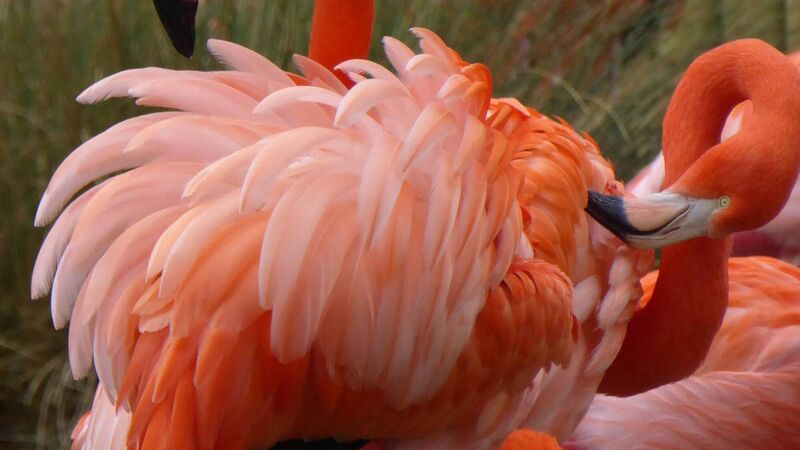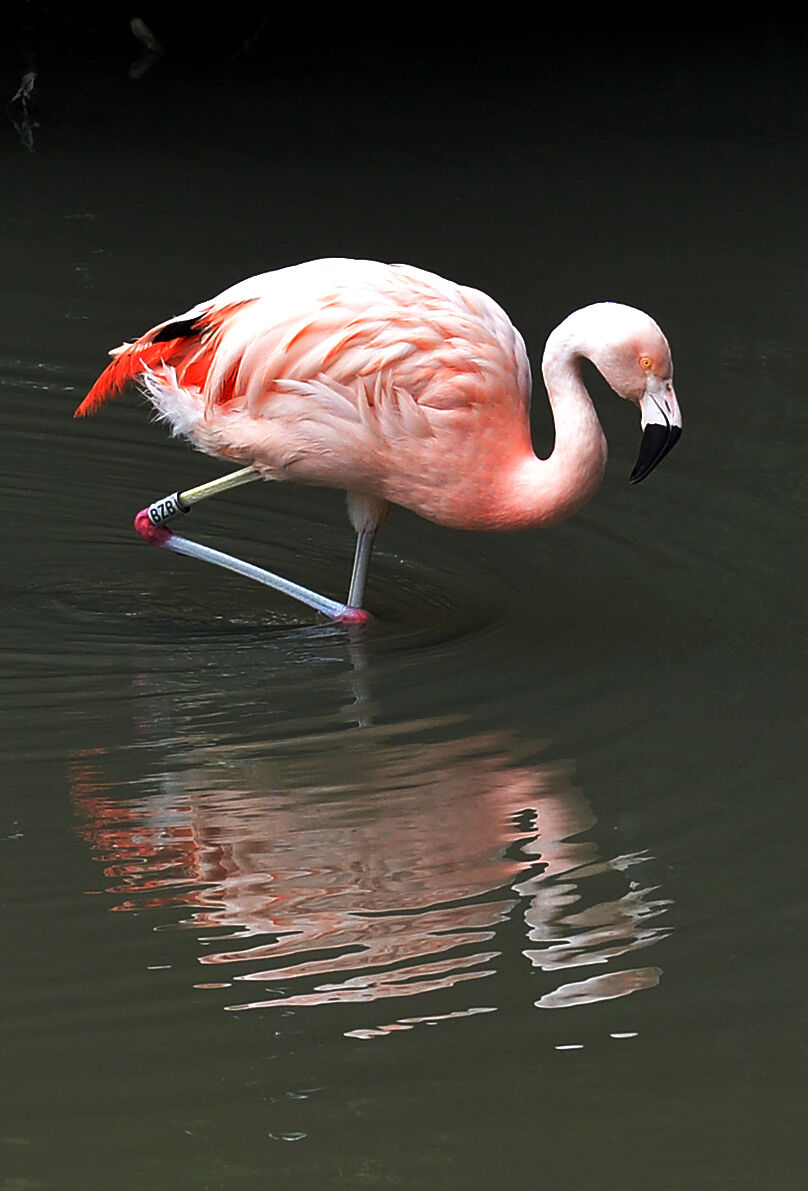Richard Collins: Flamboyant flamingos researched

The long feathers that droop over a flamingo's back (and all birds) are called scapular feathers. They grow out of the top of the wing where it joins the body, in a similar place to the human collarbone. Flamingos fluff them out for display and communication. Picture: Dr Paul Rose / WWT Slimbridge Wetland Centre
I was very fond of Ingrid. She was an amazing woman. She used no makeup, not even lip rouge — Cary Grant.
Birds are admirers of the glamorous Ingrid Bergman — they don’t use makeup — ‘What you see is what you get'. That is hardly surprising... how do you apply lipstick using only a beak? There are exceptions, however. The lammergeier, Europe's rarest vulture, uses a cosmetic. So do flamingos.
The lammergeier of the Pyrenees and the mountains of Greece, lifts bones 50 to 100 metres into the air and drops them onto rocks, smashing them open to gorge on the marrow. A brown dust is produced, which ‘the bone-breaker’ preens into its feathers, giving them a reddish tint. The dust-coating reduces feather-wear, but its main function appears to be aesthetic.

Male flamingos derive carotenoid pigments from the crustaceans they eat. Secreted from oil glands and preened into feathers, these enhance the bright pink of the wearer, making him irresistible to females. Brighter feathers show that a bird is ‘healthy, wealthy, and wise’. Prospective partners are impressed, a mate is secured quickly and bright birds are among the first to nest. Being ahead of the posse, they tend to get the best nest locations and their youngsters hatch with silver spoons in their mouths.
Using a 'signal enhancer' is an effective, if dishonest, strategy not just for humans but also for birds. You are advised to ‘dress down’ when visiting certain cities as muggers target the well-heeled. I don’t have that problem — no self-respecting mugger, I’m told, would give a down-at-heel tramp like me, a second look. Cormorants, therefore, have always seemed to be kindred spirits. These ‘sea crows’, in my experience, tend to be rather scruffy, compared to their smaller cousins, the shags, who seem always to be neatly attired in their pristine greenish-black suits.
But is there any excuse for these diving birds being down-at-heel? Plumage must be kept ship-shape and water-proof; feather-maintenance isn’t just about beauty.
How much time do flamingos spent preening compared to other waterbirds? And where do they like to be when they stand on one leg? So many questions... Fortunately, this new paper gives you the answers! Open Access in Applied Animal Behaviour Science…
— Flamingo Spec Group (@FlamingoSpecGrp) August 1, 2024
Zoo-keepers claim that flamingos spend more time preening than other birds. These long-legged marsh dwellers are not really water birds. They wade for a living but they don’t immerse themselves. Given the lengths they go to for glamour, manufacturing their own feather creams, you might expect flamingos to be particularly vain and fastidious about their appearance. Researchers from the University of Exeter, however, say they are not.
The Slimbridge Wetlands Centre in Gloucestershire has colonies of flamingos. The Exeter researchers logged the durations of preening sessions in five flamingo species there, and compared the results to those published for other water birds.
Dinner time at Flamingo Lagoon, looking ✨fabulous ✨
— WWT Slimbridge (@WWTSlimbridge) August 9, 2024
📸 Phoebe, Living Collections pic.twitter.com/EEYhhDhkX7
Some individuals preen more extensively than others, but lead researcher Paul Rose says that "contrary to popular perception, we found no evidence that flamingos spend more time preening that other water birds".
The most devoted preeners, among the Centre’s five types of water bird, are the pelicans gannets and cormorants. This is hardly surprising as these are underwater hunters.
"By understanding why flamingos behave in certain ways, we can predict how climate and habitat changes might affect them," says Dr Rose.
- Paul Rose et al. What influences feather care and unipedal resting in flamingos? Adding evidence to clarify behavioural anecdotes. Applied Animal Behaviour Science. 2024







